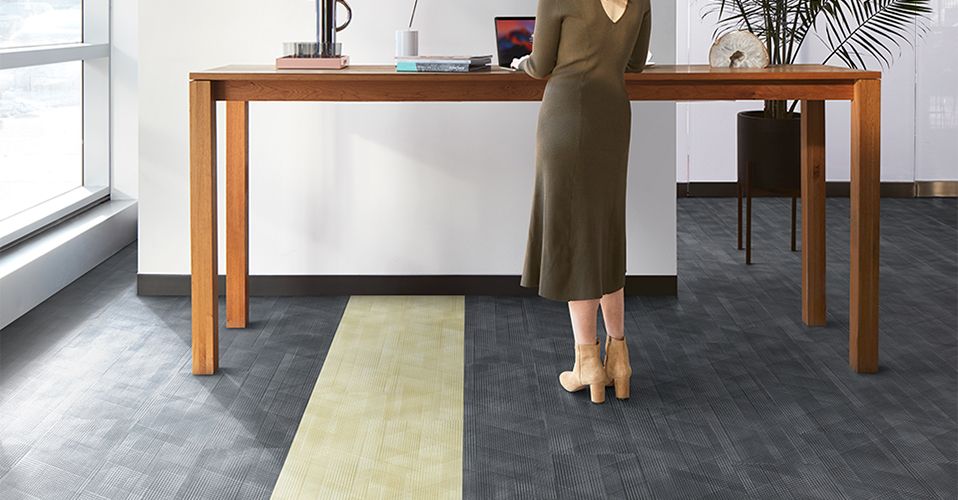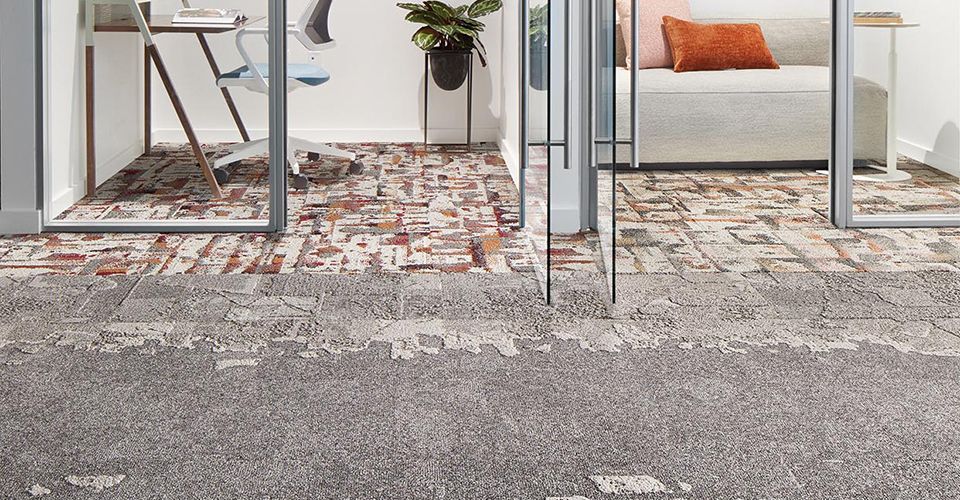Editor’s Note: This piece originally appeared on Work Design Magazine’s website on April 29, 2022.
At the start of the pandemic, remote work was an adjustment for many employees. However, after forming new habits and routines, people began to embrace the flexibility that working from home can offer.
Workplace habits continue to shift, with work-from-home being an option for some, alongside hybrid and in-person work policies. According to a survey from March 2022, almost 50% of workplace leaders already require or will require employees to return to full-time in-person work within the year.
Returning to the office means employees must adapt to new situations, especially to the lack of environmental control that comes with working in-person. As a result, workplace leaders must consider and support the individual needs of their employees by creating environments that promote wellbeing, concentration and creativity.
As companies reevaluate their physical spaces, it is important that they understand how sensory distraction – how we experience our external environment through our senses – can lead to cognitive distraction. Planning for cognitive and sensory wellbeing in spaces enhances people’s chance of feeling comfortable within the environment and subsequently feeling more satisfied at work. Designing for that reality considers three key themes; choice, permission and appropriate tools.
Recent research cites the cutting-edge work of occupational therapists and evidence showing the costs of distraction to make a case for designing a palette of typologies that nurture the senses and aid focus. By acknowledging that employees have different thresholds and tolerances for dealing with sensory input, spaces need to be programmed to support the specific needs of individuals throughout their day for effective work and wellbeing, which is good for business.
![Zen Stitch™ [-CO2] carbon negative carpet tile from Interface](https://interfaceinc.scene7.com/is/image/InterfaceInc/wc%5Fam%2Defficientworkplaces%2Dimage2%5F960x500?scl=1)
Zen Stitch™ [-CO2] carbon negative carpet tile from Interface
The Office and Its Distractions
As workplace leaders ask employees to return to the office, they may receive push back due to concerns about feeling more distracted or less productive in-person compared to at-home. Maintaining focus is a skill and concentrating for long periods of time is not easy. In fact, research shows employees often feel this – 70% admit feeling distracted at work, and only 57% agree that their workplace enables them to work productively.
What does this mean for business? A research study on productivity found that U.S. workers were losing 2.1 hours every day due to distraction, which translates to 28 billion hours and $588 billion lost annually. The study also revealed that noisy workplaces and mobile phones are to blame for most of the distractions. Additional external distractions might include the smell of someone’s lunch, or the conversation colleagues are having a few desks over, while internal sources could range from not getting enough sleep to over-analyzing an earlier exchange.
Although workplace distractions can come in many forms, science shows there are steps architects and designers can take to create a work environment optimized for each employee to stay focused and feel comfortable. They can do this by considering the full spectrum of human senses – sight, hearing, feel, smell, taste, balance and body awareness.
The Power of a Human-Centered Design
Best-in-class organizations will need to balance the needs of the individual employee with the overall business objectives for a built space. Although it may seem obvious as we sit here in 2022, it’s important to look back at workplaces from the past to determine what we can learn from these eras of office planning.
In the 90s and early 2000s, workplaces shifted away from “cube farms” toward the more collaborative layout of open-plan desking, with limited collaborative spaces. But, it is apparent that neither of these extreme solutions provides the ideal work environment for everyone. There is no absolute in the effective planning and design of the modern workplace. In fact, leading up to the pandemic, many offices began to retire the noisy, space-saving open-plan design and employed a mix of agile working spaces that accommodate the varying needs of employees.
A human-centered approach – being empathetic to people’s sensory uniqueness – reflects the philosophy that effective design should be informed by the occupants of a space. For example, the acoustic, textural and visual qualities of materials, furniture and lighting selections in support of specific typologies, influence how people experience a space. While highly textured and colorful spaces can help spur creativity, the use of soft surfaces and natural colors can contribute to a sense of calm. Specific behavior can be directed and supported by the appropriate combinations of design elements.

Drawn Lines™ luxury vinyl tile from Interface
Integrating Sensory Design Elements into the Workplace
Designing for the individual means creating a range of sensory environments to address distraction issues and a lack of control on our surroundings in the office – this ultimately supports the cognitive wellbeing of employees. To do this, architects and designers must consider two main factors that influence an individual’s response to sensory stimulation – personality type and sensory profile.
Many modern psychologists work off the idea that there are five basic dimensions of personality, known as the “Big Five Personality Traits” or OCEAN model. These five personality types are: openness to experience, conscientiousness, extraversion, agreeableness and neuroticism. Each personality type includes different traits and thresholds that shape how someone identifies with and responds to both their environment and colleagues.
Everyone has a unique and innate neuropsychological response to processing sensory information. The individual’s sensory profile influences their productivity and performance based on their current environment. All in all, this results in a neurodiverse group of employees.
Neurodiversity is a term widely used to recognize and promote inclusivity of those diagnosed with neurological differences. Around 17% of the U.S. population have been diagnosed with a neurodivergent condition, not accounting for the many conditions that go undiagnosed.
With such a diverse workforce, it is critical that work environments offer a variety of different spaces that cater to differing sensitivities and distraction levels (e.g. to different personality types and sensory profiles). Each employee can then transition through the different workspaces based on their preferences and changing sensory needs as the day progresses. For example, people with different sensory thresholds may want to work in surroundings that include spatial considerations like acoustic privacy, adjustable lighting or temperature control. It is important to note that choice alone is not enough – there must be cultural permission to work on an exterior roof deck or sit in a wing back chair with your feet up.

Granite Mountain™ Collection carpet tile from Interface
The Role of Biophilic Design
As humans, we have an inherent attraction to nature and natural processes. However, more than 50% of the world’s population live in urban areas, where people often spend about 85% of their time inside. Through biophilic design, we can enhance occupant experience, health and wellbeing in the built environment by improving connections to nature.
Architects and designers can consider all senses when designing a workspace by employing biophilic design principles to bring nature into the built environment to help support general cognitive wellbeing. When applying this design approach to various “sub-spaces” within one office, it’s easier to create a working environment that supports the neurodiversity of different employees by providing areas that can accommodate all.
Within biophilic design, there is a scale of sensory stimuli to consider, from high to low. High sensory environments are more social, open and collaborative, with lots of sensory input and diverse activity, reminiscent of a rainforest. These spaces might include built-in ambient noise, kinetic sculptures, glass partitions, varying plants or more complex visuals, art and patterns.
In contrast, a low sensory environment is devoid of most stimuli, and often features low lighting, soft furnishings and as little noise as possible – almost reminiscent of a cave. A space like this would be partitioned and feature clean lines, reduced clutter, strong soundproofing and soft lighting.
By providing a variety of spaces across this sensory scale, employees gain more control of their surroundings and can help remove the need for practices such as a designated “quiet hour.” With textiles like flooring and upholstery, work environments can be equipped to support differing stimuli needs – for example, a very textural carpet tile style might be used in an open environment to provide high sensory cues.
Offering a range of spaces allows each employee to consider their own personal preferences and apply them to how they approach the task at hand, so they can deliver their best work.
Getting Back to Roots
In recent years, mindfulness and cognitive wellbeing have been top-of-mind for many members of the A&D community, especially when it comes to workplace projects. By taking inspiration from nature, biophilic design allows architects and designers to get back to the roots of human sensory behavior and puts the sensory control back into the hands of the employee, helping them establish a healthier working connection with the workplace.
Research shows this approach can lead employees to experience increased productivity and less anxiety, stress and burnout, while helping them feel more creative and innovative. Providing a choice of sensory spaces within the workplace is an opportunity for architects, designers and company leadership to help employees re-establish a healthy working relationship with the office during this time of transition. The future of workplace has never been more uncertain or more exciting.